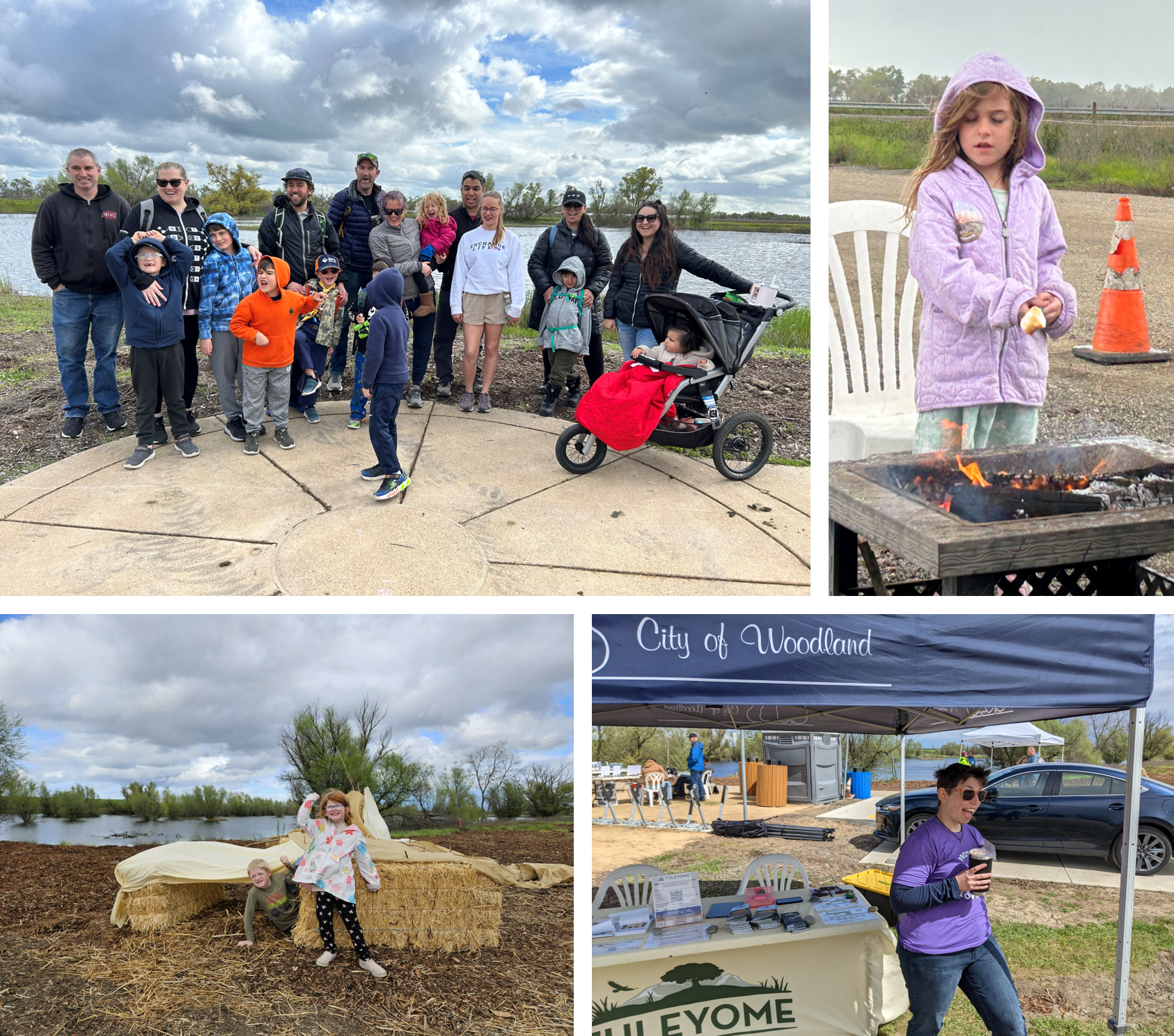Spring Thing 2024

Tuleyome’s third annual Spring Thing is in the books! This year’s event was the best yet, with over 300 people coming out to Woodland Regional Park Preserve over the course of the day. This was the first year that we have co-hosted the event with the City of Woodland and we were delighted to have City Manager Ken Hiatt, Mayor Tania Garcia-Cadena, and our own volunteer board member Lyndsay Dawkins provide opening remarks to help kick off the celebration.
Other highlights included:
- 6 tours of the park, each with different themes including birds, native plants, wetlands, nature sketching, and compass navigation
- 8 kids receiving free loans of hiking boots through our Youth Boot Bank. If you weren’t able to find the right fit at the event, keep an eye on our events page for upcoming Boot Bank events.
- Tasty food from the Hefty Gyros food truck
- A performance of “Superbird” by Nature’s Theater
- Campfire stories & s'mores
- A successful silent auction featuring artwork, gift baskets, and a range of experiences
- Getting front page coverage in the Sunday edition of the Woodland Daily Democrat
- Fun activities for kids including story times, mock fossil excavations, rock painting, fort building, and giant tic-tac-toe

Spring Thing would not have been possible without the hard work of Tuleyome’s staff, our volunteer board of directors, and our crew of 21 volunteers who came out to help run the event. Special thanks to everyone who helped lead tours and performances, including Lars Anderson, Terri Barry, Laura Benn, Robin Carlson, Lyndsay Dawkins, Jennifer Hogan, Jack Holmes, Nate Lillge, and Tom Stallard.
We are very grateful to our official sponsors:

We are also grateful to Woodland Grocery Outlet, Nugget Markets, and Conservation Lands Foundation for making donations, and to our silent auction donors Mackenzie Banta, Blue Note Brewing, The Burger Saloon, Alan Fishleder, Gallery Coffee, Bill Grabert, The Hive, Phillip Laughlin, Barbara Mendenhall, The Mondavi Center, Morgan’s on Main, Mike Read, Sac Republic FC, Petra Silverman, Whitewater Adventures, and Woodland Food Front.
Check out our Flickr page for even more great photos from Spring Thing. If you missed this year’s event, be sure to save the date for next year’s Spring Thing – March 22nd, 2025.
About Geoffrey Benn
Geoff is Tuleyome's Education Associate. He has a Ph.D. in Plant Biology and previously taught introductory biology at UC Davis and American River College.
RECENT ARTICLES






